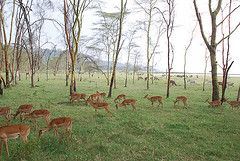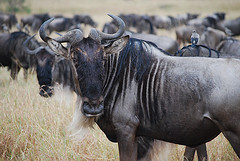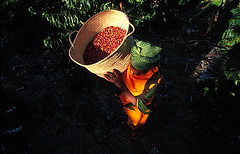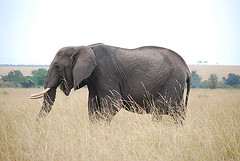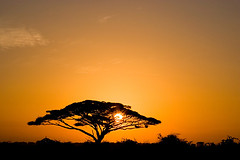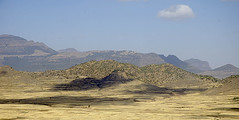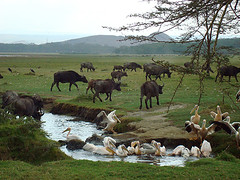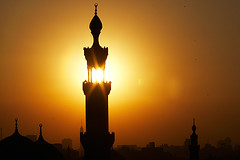Enlightened self-interest demands understanding the issues facing the people of Africa then empowering and supporting African self-initiative to create thier own Renaissance by implementing African solutions to African problems.
Tuesday, February 21, 2012
Timbuktu Chronicles

- Emeka Okafor
- Emeka Okafor is an entrepreneur and venture catalyst who lives in New York City.He is the curator of Maker Faire Africa.He was the director for TED Global 2007 that took place in Arusha,Tanzania.In addition he is a member of the TED fellowship team.His interests include sustainable technologies in the developing world and paradigm breaking technologies in general. His blog, Timbuktu Chronicles seeks to spur dialogue in areas of entrepreneurship, technology and the scientific method as it impacts Africa. "Timbuktu is a city unsullied by the worship of idols...a refuge of scholarly and righteous folk, a haunt of saints and ascetics, and a meeting place of caravans and boats" -Al-Sa'Di
Through a simple processing technique, Demangam Victorine Luekam converts soya milk into a meat-like product. She then fries the soya meat in oil, which it allows it to be stored for up to a week, and sells cubes of it on sticks to a growing number of customers. Martha Chindong, who interviews Demangam, finds that soya meat is tasty as well as nutritious. It’s particularly good for menopausal women, as it contains natural oestrogen hormone. Eating soya products regularly helps to reduce the hot flushes that are a common symptom of menopause. And as a legume crop, soya also boosts soil fertility...[more]
Soyabean image courtesy of Wikipedia
Source:
http://timbuktuchronicles.blogspot.com/
Friday, February 17, 2012
See Africa Differently



Africa is 54 diverse countries filled with people working to bring about positive changes.
Our site is going to showcase exciting news, videos and personal stories from the world's second largest continent.
ONE | Amazing Africa: Photos from our archives
aley/ONE.
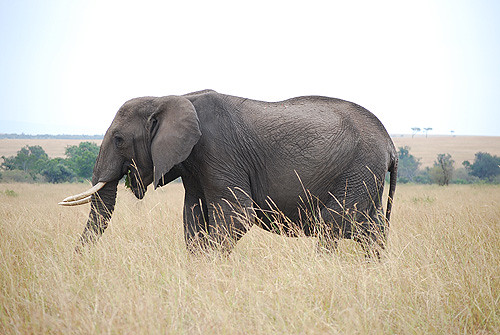
A mighty elephant in Nairobi, Kenya. Photo credit: Maura Daley/ ONE.
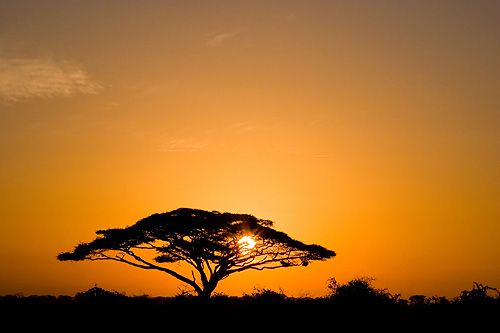
Beautiful african sunrise, with backlit acacia tree on Amboseli Natural Park, Kenya.

View of Kibera from the railroad tracks. Photo credit: Morgana Wingard/ONE.
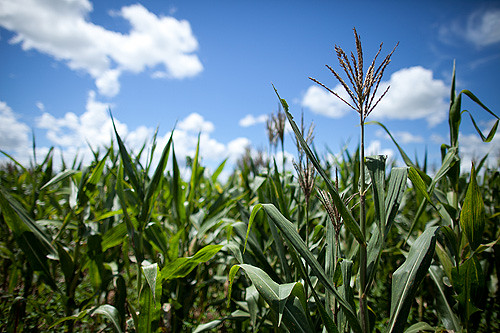
Healthy corn crops growing in Monkey Bay, Malawi. Photo credit: Morgana Wingard/ ONE.
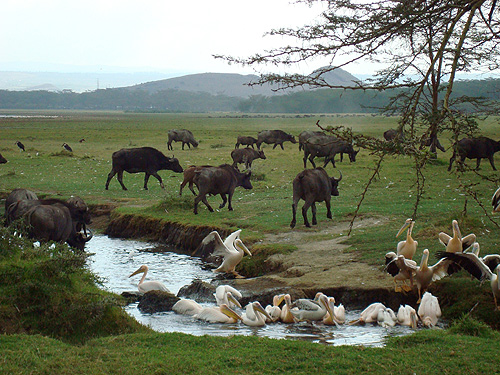
Cows and birds happily coexisting in Kenya.
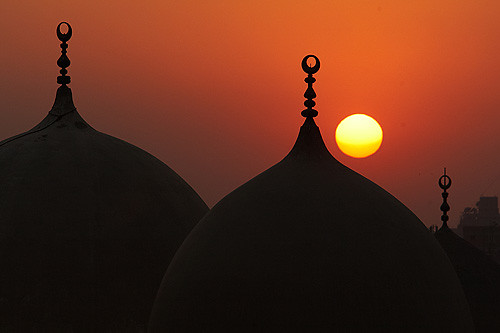
Red dusk in Cairo, Egypt. Photo credit: Olivier Asselin/ Living Proof.

Gorgeous minaret. Photo credit: Olivier Asselin/ Living Proof.
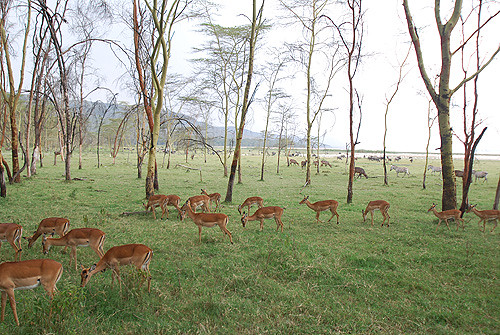
Deer roaming the landscape in Nairobi, Kenya. Photo credit: Maura Daley/ONE.
How did Rwanda cut poverty so much? - latimes.com


How did Rwanda cut poverty so much?
This post has been corrected. See the note at the bottom for details.
The small African nation of Rwanda recently announced that it had cut poverty by 12% in six years, from 57% of its population to 45%. That equals roughly a million Rwandans emerging from poverty -- one of the most stunning drops in the world.
It's a remarkable achievement for Rwanda, which has emerged from civil war and a bloody ethnic genocide in the 1990s. How did it happen? The Times quizzed Paul Collier, director of the Center for the Study of African Economies at Oxford University, about the numbers.
Are there any doubts that the drop is real?
No doubts; I know the economics professor who did the data analysis, and he is highly experienced and painstaking, so it is genuine.
How did Rwanda cut its poverty so much?
There were one or two helpful events, notably the rise in world coffee prices, which pumped money into the rural economy, but, of course, overall the global economy since 2005 has not provided an easy environment for success. Hence, most of the achievement is likely due to domestic policies.
Rwanda is the nearest that Africa gets to an East Asian-style “developmental state,” where the government gets serious about trying to grow the economy and where the president runs a tight ship within government built on performance rather thanTuesday, February 14, 2012
Photos in the news - chicagotribune.com
 |
Show of force( Mohamed Abdiwahab, AFP/Getty Images / February 14, 2012 )An African union peace keeping force and Somali government forces unite on the Mogadishu outskirts. Somalia African Union-backed Somali government forces have attacked Islamist Shebab rebel posts on the outskirts of the war-torn capital Mogadishu with tanks and artillery. Burundian troops with the AU Mission in Somalia (AMISOM) launched a pre-dawn attack against holdout positions of the Al-Qaeda allied Shebab, to secure a key road leading from anarchic Mogadishu to the rebel-held town of Afgoye. |
Saturday, February 11, 2012
The End - Moments in Africa 1993-1997
License: Standard YouTube License
Wednesday, February 1, 2012
About "Take Care" Program
Conservation & Communities
 Africa loses more than 10 million acres of forest every year -- twice the world’s deforestation rate. Global demand for forest and extractive industry products is growing, with competition for Africa’s natural resources at an all-time high. Meanwhile population growth in Africa is faster than anywhere else, with accompanying poverty, and basic needs unmet. To be effective, forest and species conservation must address the deeply rooted human problems associated with poverty. As Jane says, “How can we even try to save the chimpanzees and forests if the people are so obviously struggling to survive?”
Africa loses more than 10 million acres of forest every year -- twice the world’s deforestation rate. Global demand for forest and extractive industry products is growing, with competition for Africa’s natural resources at an all-time high. Meanwhile population growth in Africa is faster than anywhere else, with accompanying poverty, and basic needs unmet. To be effective, forest and species conservation must address the deeply rooted human problems associated with poverty. As Jane says, “How can we even try to save the chimpanzees and forests if the people are so obviously struggling to survive?”- We educate farmers on sustainable farming methods such as rotating crops for soil fertility and re-cropping rather than clearing forest to make new fields
- We promote the use of fuel-efficient stoves that reduce the need for fuel wood by two-thirds and are made from local materials – saving time, money and trees
- We organize micro-credit programs that allow villagers – especially women – to obtain capital for small business ventures by pooling their own money seeded by JGI funds. The payback rate is impressive – over 85 percent.
- We work with villages to improve health through training and infrastructure development, including spring protection, shallow and bore wells, and ventilated improved pit latrines
- We place a special emphasis on girls’ education, providing scholarships that have help girls in Tanzania complete secondary school and beyond.


